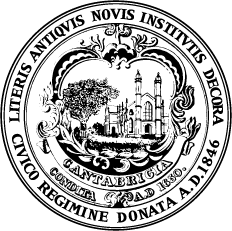This summer, Cambridge installed new quick-build separated bike lanes and raised pedestrian islands on Brattle Street. Cambridge's two-way bike lane on Brattle Street now spans the entire length of the street, connecting Harvard Square to West Cambridge—almost 1.5 miles from end to end.
Project Photos
Photos by Kyle Klein
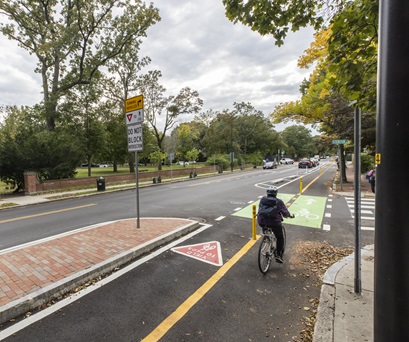
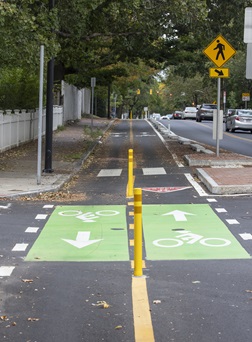

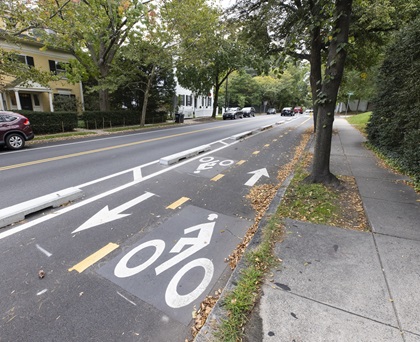

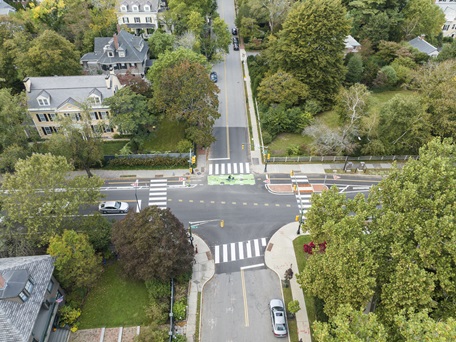

Project Background
The City installed the separated bike facility on Brattle Street in three phases:
This project helps the City of Cambridge meet the requirements of the Cycling Safety Ordinance, which mandates the installation of 25 miles of separated bike lanes between 2020 and 2026. These lanes increase comfort for people biking by using a physical barrier or curb to separate them from vehicles.
Piloting a new type of separator
On Brattle Street, we separated bike lanes from general travel lanes with concrete curbs and flex posts. This was our first time using concrete curbing to protect quick-build separated bike lanes, and we will observe how they work over time and in different conditions to determine whether to expand them to other parts of Cambridge.
Improvements for pedestrians
As part of the project, the City also built pedestrian crossing islands between bike lanes and vehicle travel lanes at crosswalks near Appleton Street, Lowell Street, Fayerweather Street, Lexington Avenue, and Fresh Pond Lane. These crossing islands give pedestrians a place to stop between the bike lanes and vehicle travel lanes, allowing them to navigate each section of the road separately and slowing vehicles as they turn.
Engagement
Between May 2022 and April 2023, the City held four online community meetings and two in-person open houses to solicit community feedback on the design of the Brattle Street Safety Improvement Project. Staff also presented designs at three Historical Commission meetings and made changes with their feedback. Read materials from these meetings and watch recordings on the project webpage.
One piece of a network
Brattle Street is just one piece in the City of Cambridge’s plan for a safe, connected bicycle network. On the West Cambridge end of the project, the City plans to extend the two-way bike lane farther toward Watertown on Mt. Auburn Street, and connect people biking to Huron Avenue via future separated bike lanes on Aberdeen Avenue. The Harvard Square end of Brattle Street connects to Massachusetts Avenue, where projects are complete, in-progress, and planned to add separated bike lanes along the entire road.
The City’s goal is to encourage more people to bike and increase safety by building a continuous network of separated lanes, off-street paths, and low-volume, low-speed streets, connecting important destinations throughout Cambridge. Comfortable bike routes throughout the City help people of all ages and abilities travel around their neighborhoods and beyond quickly, safely, and conveniently.
Bike Lanes, climate, and public health
Safe bike infrastructure is also a key piece to meeting Cambridge climate and public heath goals. When our streets are safe for all users, more people can choose active, carbon-free mobility options such as walking and cycling.
Safe Streets
Safer, more comfortable bike infrastructure helps us get closer to “Vision Zero”—our commitment to eliminating transportation-related deaths and serious injuries while increasing healthy, equitable mobility for all.
Learn more about the project
Visit the project webpage or contact Street Design Project Manager Andreas Wolfe at 617-349-9162 or awolfe@cambridgema.gov.

